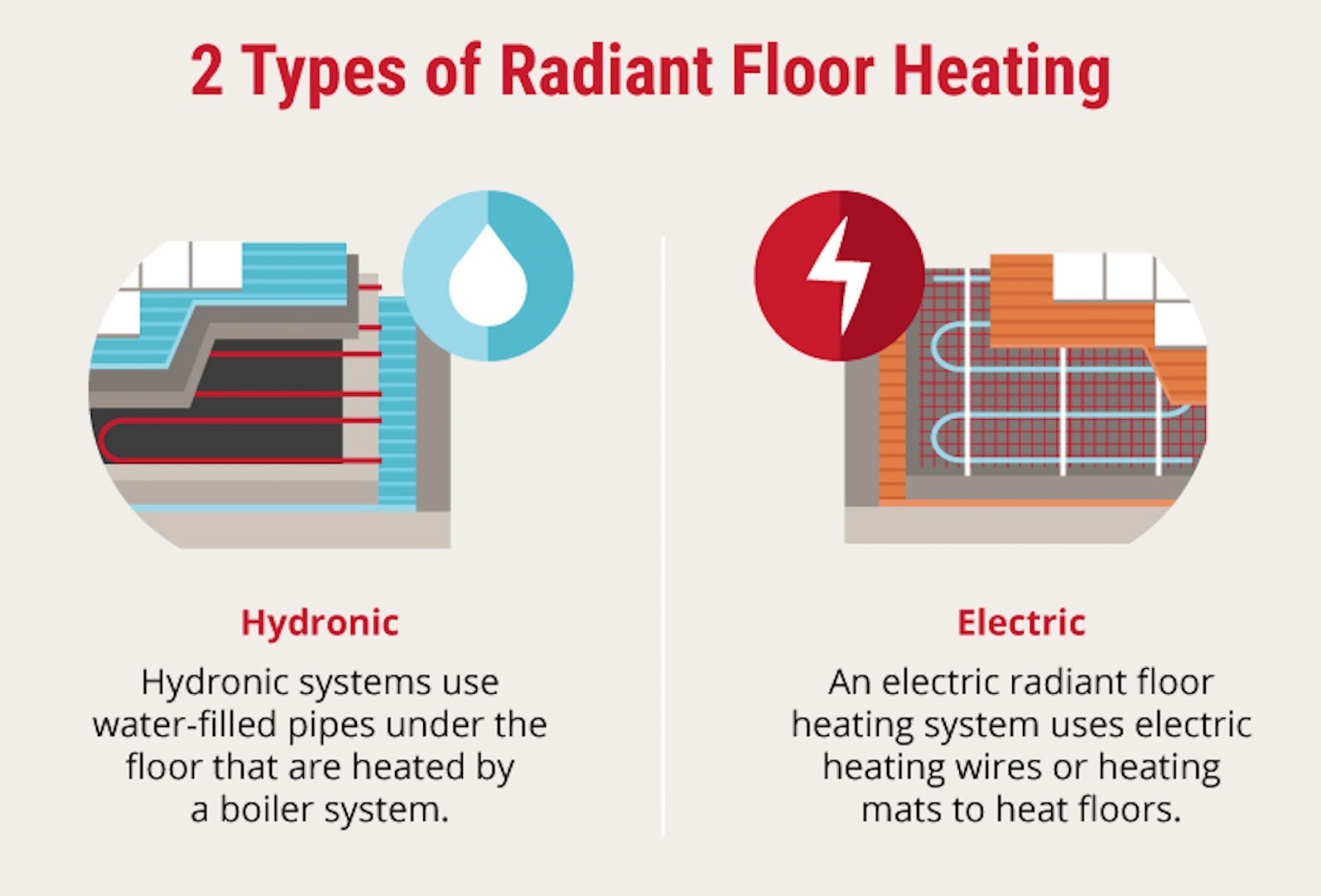Floor heating may be described in a few simple words. The floor is allowing heat to ascend. But did you know there are two types of floor heating? Electric wires or hot water-filled plastic tubing (hydronic) can be used in hydronic floor heating. They both achieve the same result—a uniformly heated space from the floor up—but in very different ways.
Electric underfloor heating, a kind of central heating, generates radiant heat through electrical resistance. It is just a system of electrically conducting wires woven into the floor. Thermal energy is employed to complete energy exchanges between the concrete slab, beneath the tile, or in the screed. The underfloor heating system generates heat by utilising thermal energy. You can select the best type of radiant floor heating for your project by studying the advantages and disadvantages of each system. Choosing any reputed agency of hydronic underfloor heating in Adelaide is recommended because of its exceptional services. Considering the heating, we need to took care of condensing units as well.
Table of Contents
Electric Radiant Floor Heating
Electric floor heating systems are known for their versatility. They are easy to install, so either a professional or a do-it-yourself could handle it. Depending on the room’s requirements, they provide enough heat to serve as either primary or supplemental heating. They are appropriate for new-construction homes and remodelling projects since they frequently do not require a lot of labour to connect the system to the circuit. Electric floor heating systems for households also meet several additional criteria: they require little maintenance, slightly raise the floor, and, best of all, save energy and money.
Maintenance of Electric Radiant Floor Heating
Electric heated flooring is frequently low-maintenance. After the floor-heating system and flooring have been correctly installed, the only “maintenance” required is to ensure that the system is working. A technician can use a thermographic camera to locate and repair a cable break if it is the source of the problem. Electric floor heating systems offer the advantage of only necessitating the removal of a piece of flooring to remedy the issue.
Cost of Operation
The biggest drawback of electric floor heating is how expensive it is to operate. Depending on where the homeowner lives, electricity may be expensive. If so, it would be too costly to construct a whole-house electric floor-heating system. It is more practical to use electric floor heat only to heat the toilets (or other small rooms). Similarly, connecting the system to the electrical system for heating a large room or house requires a bit more work. Electric floor heating systems can almost always be hooked into an existing bathroom or small space circuit. If the cable is used in a large room or throughout the house, you’ll need a competent electrician to run a new wire to the main panel and connect a new circuit.
Hydronic Radiant Floor Heating
Compared to electric floor heating systems, hydronic floor heating systems are ideal for whole-house heating. They are also unsuitable for remodelling projects. This is because hydronic systems ought to be installed when a house is built. Hydronic floor heating refurbishment is quite challenging since hydronic floor heating systems require the installation of a boiler, a pump, and gas lines. These factors might make hydronic heating expensive if the building does not already have a boiler. On the other hand, as the cost per square foot drops as the number of space increases, a whole-house hydronic system’s overall running costs are frequently lower. In other words, when several rooms share the expensive components (such as the boiler, pump, and gas lines), the cost is shared, lowering the overall cost per square foot.
Maintenance of Hydronic Radiant Floor Heating
On the downside, hydronic floor-heating systems are challenging to repair because an issue might arise since it is impossible to identify the precise position of a leak. This suggests that the flooring must be taken up to find and repair the damaged plastic tubing. Additionally, most homeowners leave their systems running throughout the season since hydronic systems take much longer to warm up than electric systems. Most users do not set their computers to turn on and off according to their schedules because of the delay in starting time. They typically use more energy as a result. One can choose hydronic underfloor heating in Adelaide for such maintenance.
- Heat source – Electric radiant floor heating systems use electricity as the heat source, while hydronic radiant floor heating systems use hot water as the heat source. Electric systems are typically more efficient than hydronic systems because they do not have to waste energy heating water. However, hydronic systems can be powered by various energy sources, including natural gas, oil, wood, or heat pumps, making them more environmentally friendly.
- Installation – Electric radiant floor heating systems are generally easier to install than hydronic systems because they do not require a separate heat source or a network of pipes. Electric systems can be installed directly under the flooring material, and the wiring can run through the joists or along the room’s perimeter. Hydronic systems require a heat source, such as a boiler or heat pump, and a network of pipes embedded in the floor or installed under the flooring material. The installation process is more complex and may require the services of a plumbing or HVAC professional.
Conclusion
Since heat travels equally in all directions until it reaches a layer of thermal resistance, insulation should be placed beneath the heater, whether you have an electric or hydronic system, to minimise downhill heat loss. To enhance thermal resistance, place more insulation behind the heater. These forces heat upward into the space, condensing into hot air and rising. By extending the time it takes for your underfloor heating system to heat up and reducing heat loss, insulation helps it work more efficiently. Only underfloor heating can offer the warmth, comfort, and luxury that both electric and hydronic systems can. One can opt for Eckermann Plumbing to know more about radiant floor heating.












